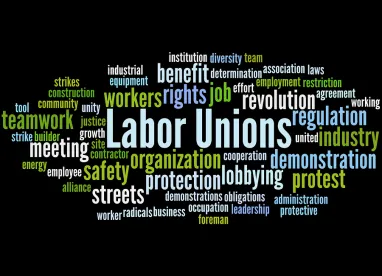The National Labor Relations Board continues its December precedent merry-go-round with a return to the Specialty Healthcare, 357 NLRB 934 (2011) (“Specialty Healthcare”) standards for bargaining unit determinations. In American Steel Construction, 372 NLRB No. 23, the Board overturned PCC Structurals, Inc., 365 NLRB No. 160 (2017) (“PCC Structurals”) (which had, itself, restored traditional community-of-interest analysis). This is just the latest in a flurry of Board decisions coming down before Member John Ring’s term ends on December 16, 2022, and one of many foreshadowed by General Counsel Jennifer Abruzzo’s enforcement agenda (which we discussed here). Once again, the Board is potentially ushering in an era of “micro units” by giving unions extremely broad latitude in establishing the scope of a petitioned-for bargaining unit.
“Overwhelming Community of Interest” and the Specialty Healthcare Unit Determination Standard
Under Specialty Healthcare, a bargaining unit will be considered appropriate if (i) it consists of a readily identifiable group, (ii) that group shares a community of interest, and (iii) it is “sufficiently distinct” from excluded employees. In order to establish that certain employees excluded from a proposed unit are not “sufficiently distinct,” the employer must establish that the excluded employees can show an overwhelming community of interest with the unit members. (We have discussed Specialty Healthcare and its application on a number of occasions over the years in posts).
In contrast, prior to Specialty Healthcare and under the PCC Structurals standard (which we have previously discussed here and here), to add employees to a bargaining unit, the employer needed to show only that those employees have interests that are not “meaningfully distinct” from those of the proposed unit members.
The Board Majority (Chairman McFerran and Members Wilcox and Prouty, with Members Ring and Kaplan dissenting) explicitly stated that the goal was to give more deference to the employees’ choice of unit structure, and in a footnote, the Board also suggested that this standard honors employees’ “broader Constitutional right to freely associate.”
According to the Board, for excluded employees to share an “overwhelming” community of interest with unit members, their interests must be “near-indistinguishable.” This is a much higher standard to meet than simply showing that including the excluded employees would make for a more optimal, efficient, or appropriate unit.
Takeaways
The primary effect of the Board’s decision is that it will now be more difficult for employers or other parties to challenge the appropriateness of petitioned-for units. It is likely to cause a rush in petitions for “micro units” tailored to union-sympathetic employees, as it is easier for a union campaign to win the approval of fewer employees. This could fracture workplaces as different employee sub-groups negotiate their own agreements with the same employer.
As always, we will continue to keep you posted.





 />i
/>i

